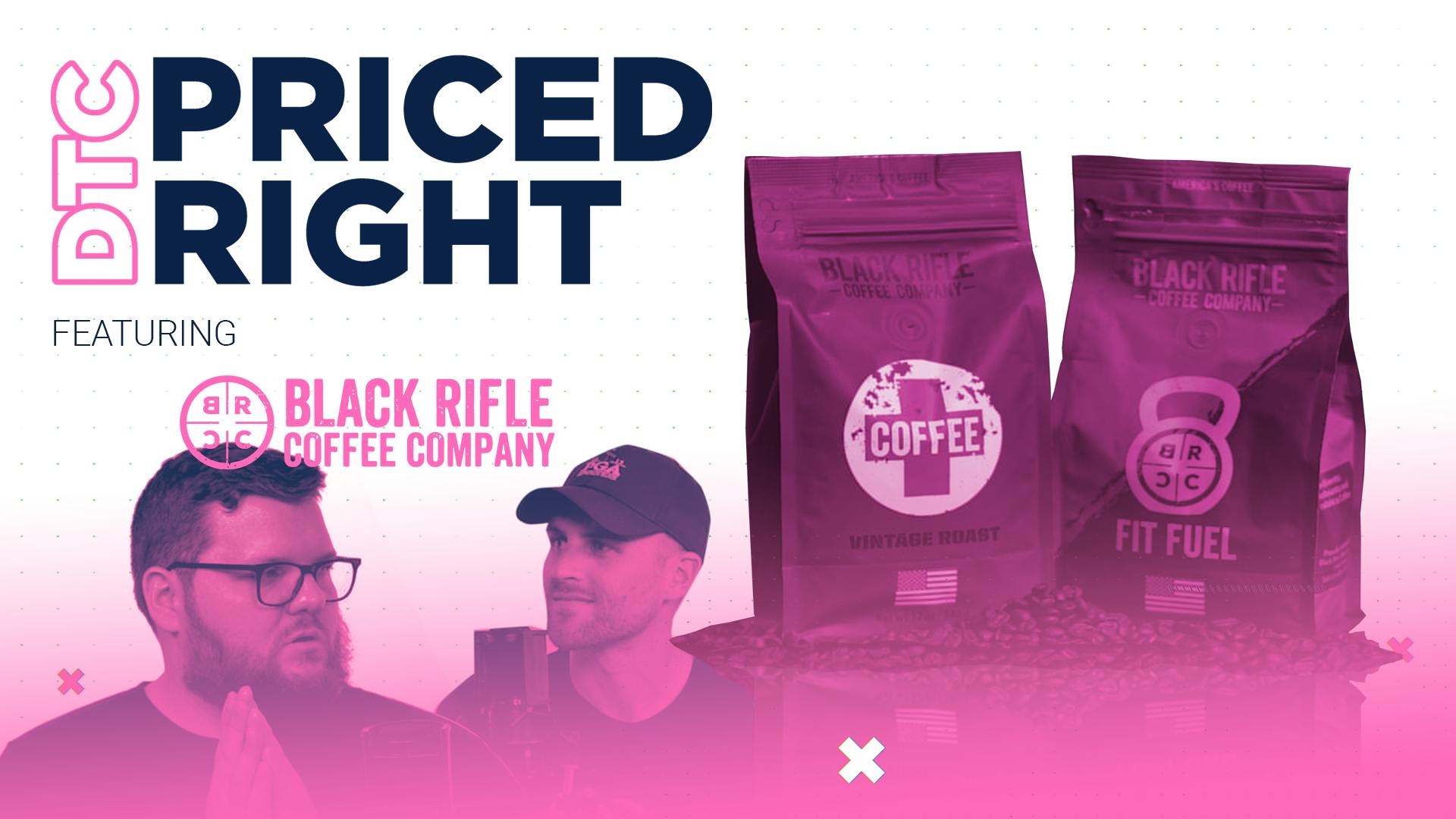
Reading up on Blinkist's Web Funnel
Today, we're diving into the Web2App funnel of Blinkist, the app that condenses entire books into digestible, time-saving insights. While Blinkist delivers a fantastic product, how well does its web funnel perform? To help us break it all down, we’re joined by app growth expert Nathan Hudson. Together, we’ll analyze Blinkist’s Web2App strategy to uncover what works and where improvements could be made.
Still want more? Check out the full interview with Nathan Hudson, exclusively available on Paddle Studios.

Web2App Strategy
When we first dive into Blinkist, we can quickly see they utilize a hybrid Web2App strategy, allowing users to purchase subscriptions both through the app store and directly on the web. This approach provides multiple entry points for users and ensures a seamless experience across devices. Companies at Blinkist’s scale benefit from Web2App strategies in several ways:
- Expanded Audience Reach: Blinkist drives traffic through paid channels, organic search, and referrals. Offering a web checkout allows them to capture users who might not convert through the app alone.

- Increased Monetization Flexibility: By offering a web-based subscription, Blinkist bypasses app store fees, allowing for more pricing control and better margins.
- Scalability: Shifting some advertising spend toward web acquisition can help reach new audience segments that may not engage as effectively through app store campaigns.

While Blinkist utilizes a very complicated funnel, Web2App strategies don’t necessarily need to be complex. Some brands achieve success with a simple landing page and checkout process, proving that the best approach depends on the product and target audience.
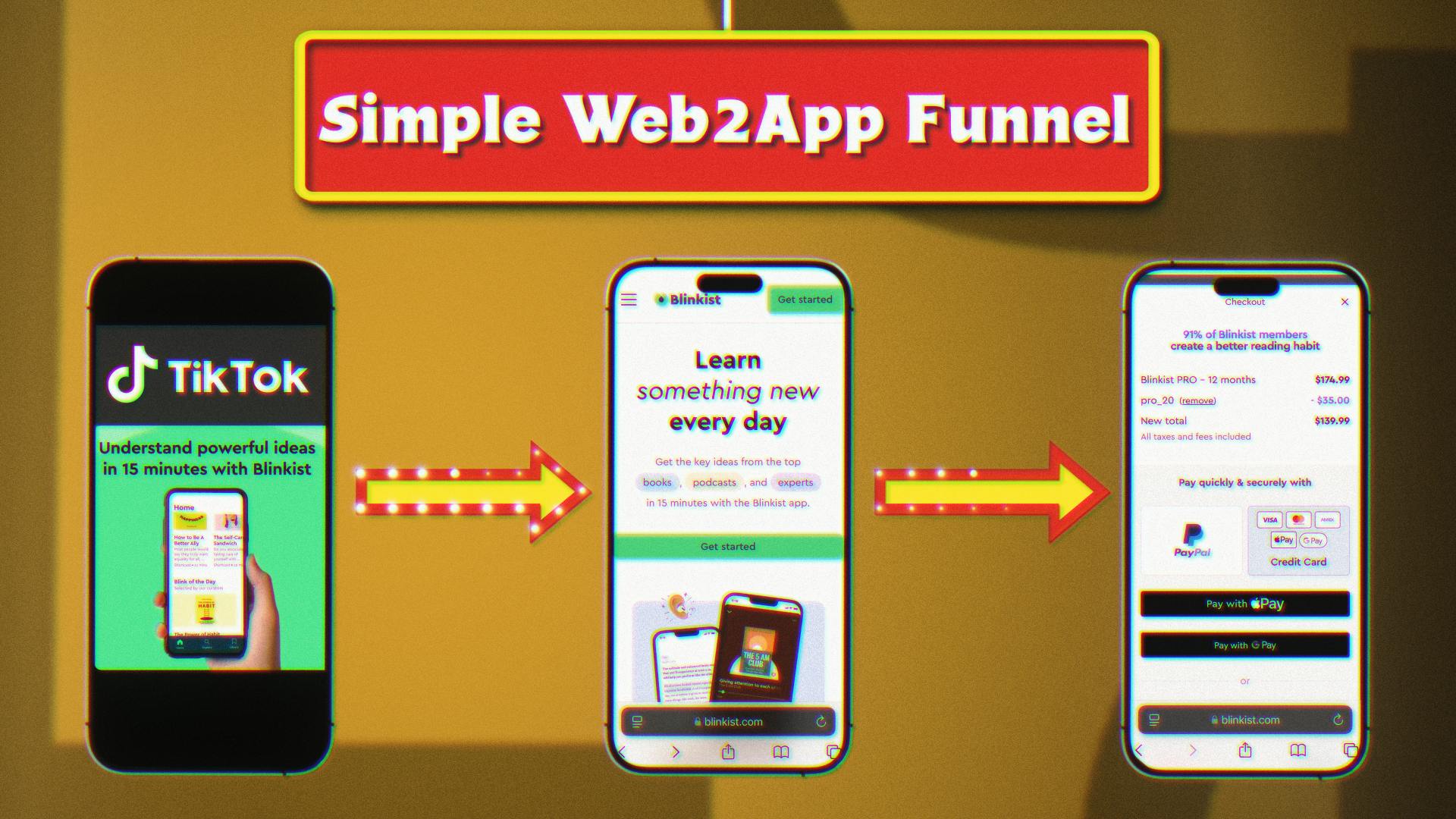
Onboarding
Blinkist’s onboarding experience starts with a value-driven approach, beginning with a strong H1: "Grow to be the most interesting person in the room." This hooks users by directly appealing to their desire for self-improvement.

The onboarding process continues with a great use of questions and interstitials:
- Social Proof Placement: Early on, Blinkist presents credibility-building elements, such as user testimonials and recognizable brand mentions, to reassure potential customers.
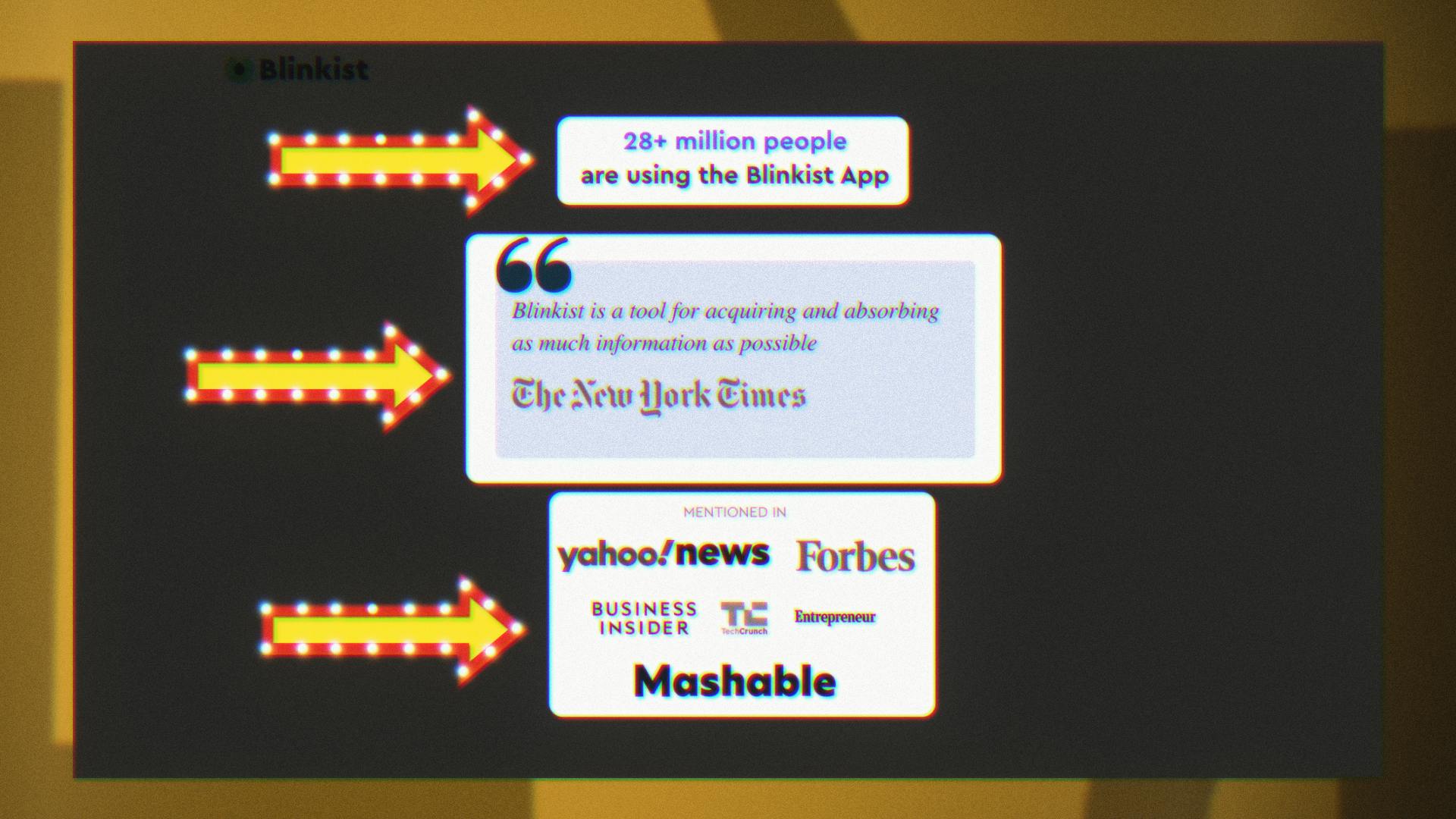
- Personalization Through a Quiz: Users answer a series of questions about their interests and reading habits. Each response is met with an interstitial screen that provides context and encouragement, helping to keep users engaged.
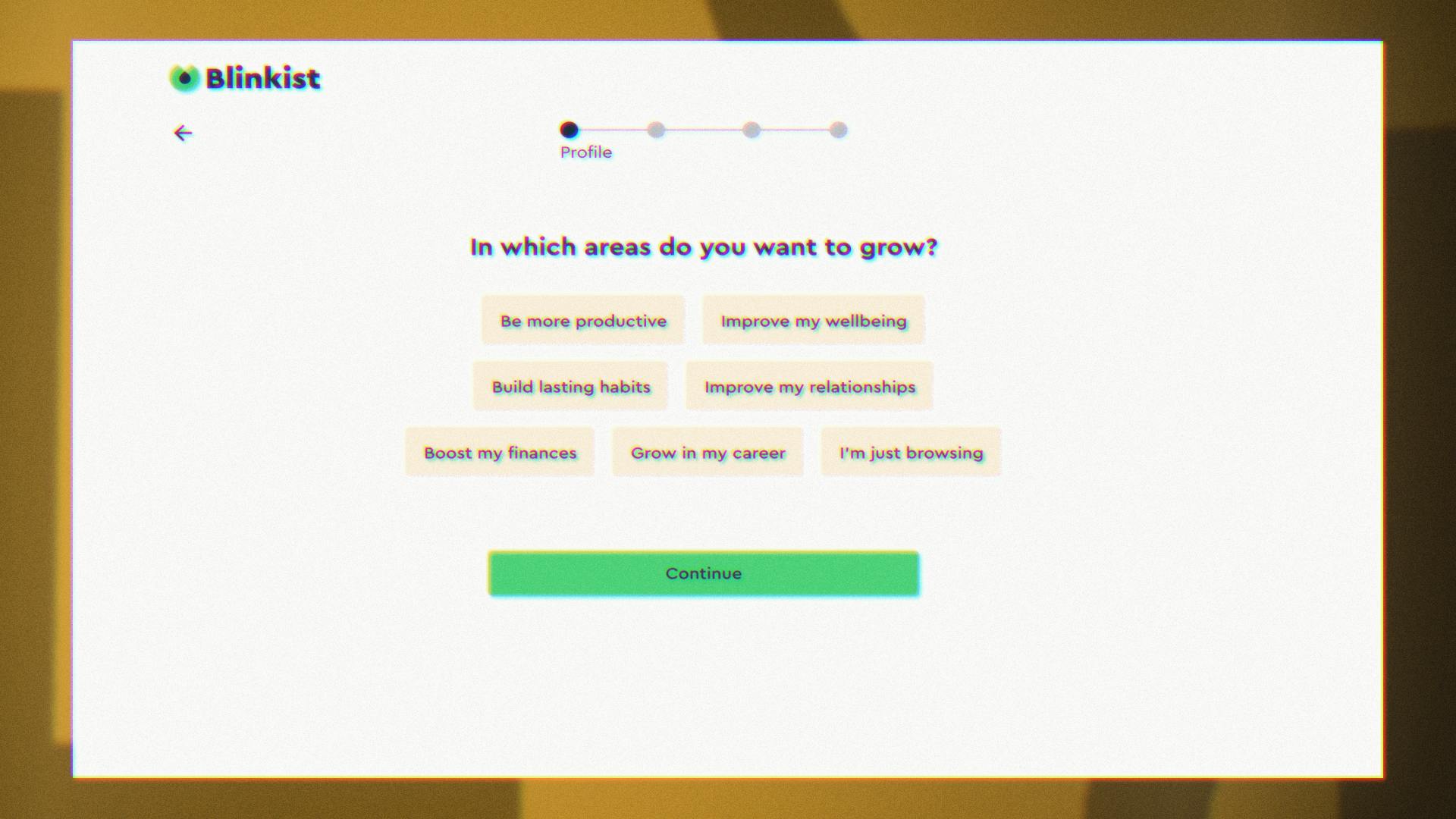
- Strategic Question Ordering: Blinkist starts with broader engagement-related questions before moving into specific demographics like age. While leading with an age question can sometimes hurt conversions, Blinkist must have data to support its decision to do so.

- Push-Pull Engagement: By rewarding users with dynamic responses to their inputs, Blinkist builds a sense of progression and personalization. This technique increases commitment and reduces drop-offs.

The best onboarding flows prioritize connection over interrogation. By breaking up the monotony of form-filling, Blinkist ensures users remain engaged throughout the process.
Paywall
Once users complete onboarding, they’re directed to Blinkist’s pricing page, which is optimized for conversions in several ways:
- Anchoring with a Single Pricing Plan: Blinkist prominently displays only a 12-month subscription option, creating a clear decision path and reducing analysis paralysis.
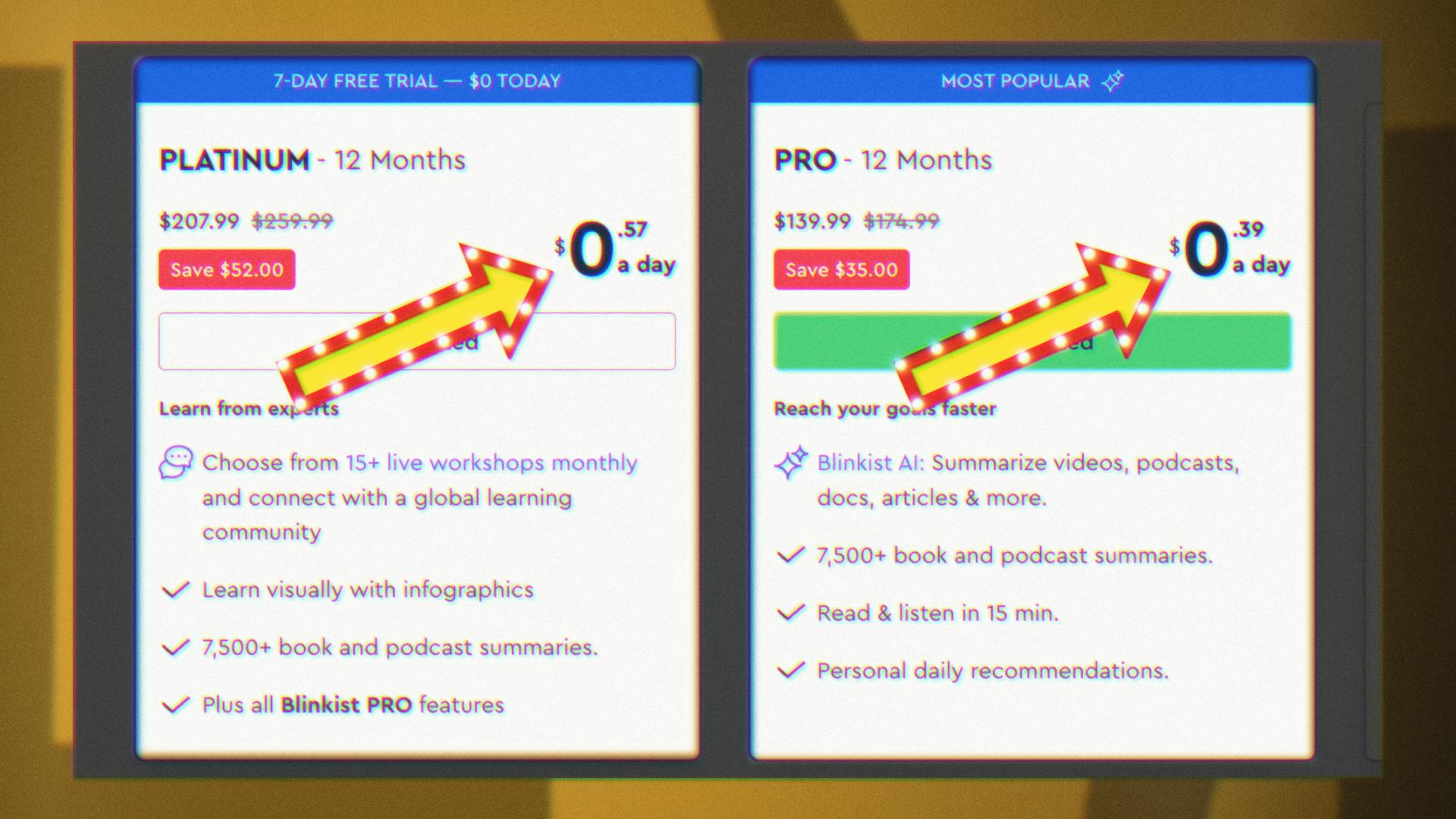
- Countdown Timer for Urgency: A subtle countdown timer encourages users to act quickly, a tactic that works particularly well on mobile devices where attention spans are shorter.
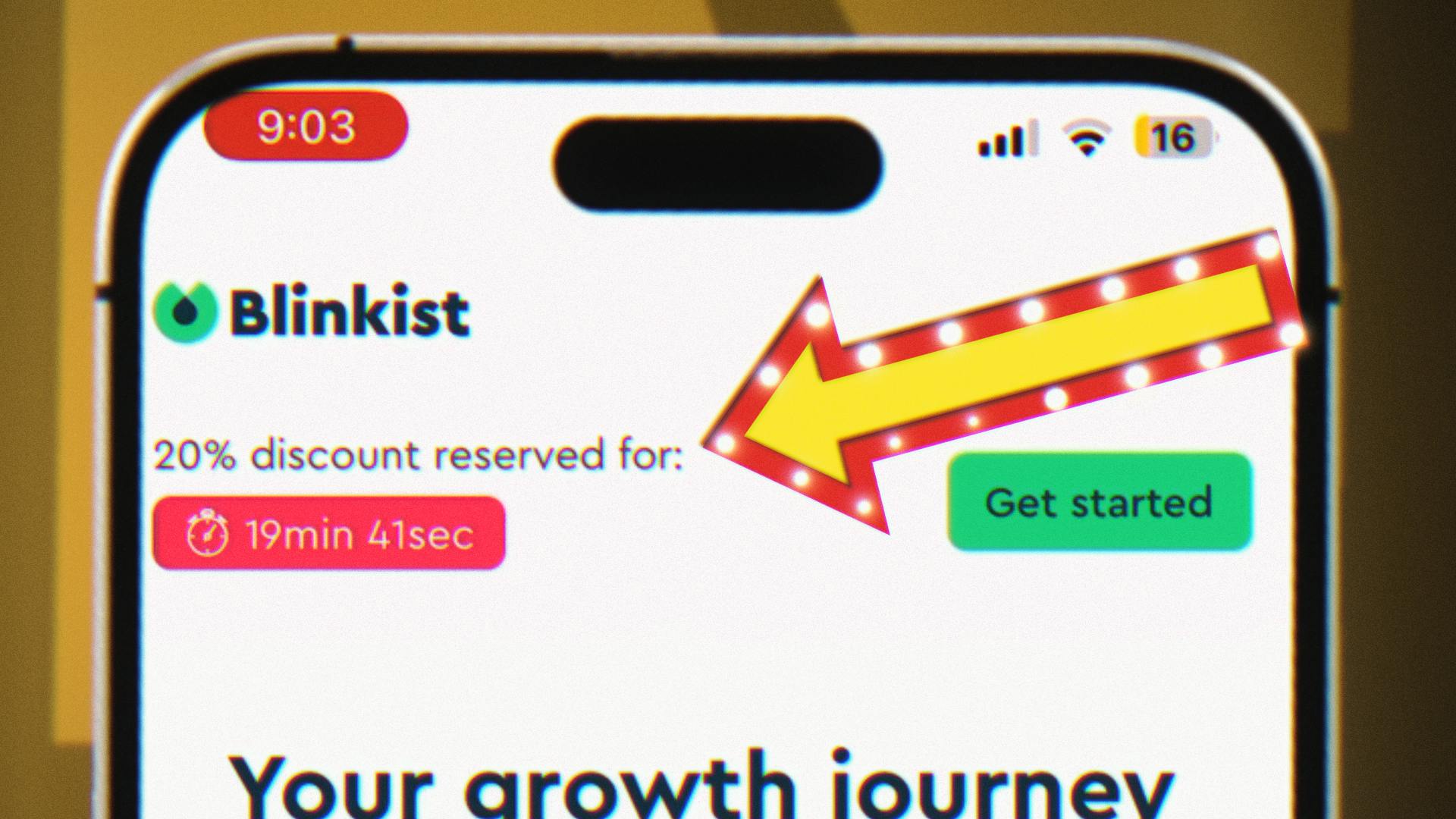
- Localized Pricing: Prices are dynamically displayed in the user’s native currency, reducing friction and enhancing trust. We found that 86.7% of Blinkist users were able to pay for Blinkist in their native currency.
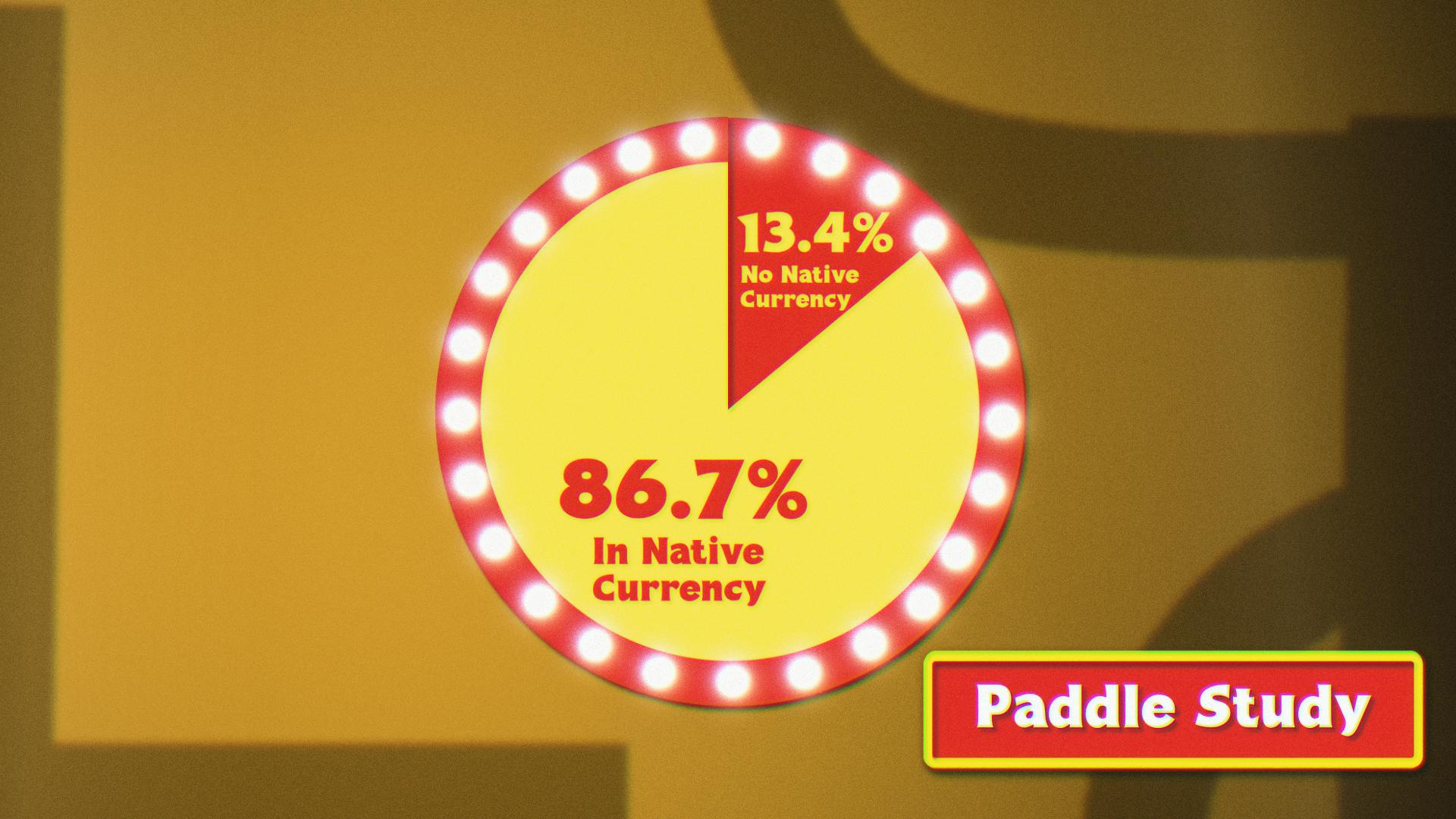
- Diverse Payment Options: Blinkist offers a wide range of payment methods, including credit cards, PayPal, and mobile payment solutions like Google Pay. It's important to cater to different regional payment preferences to maximize conversions.
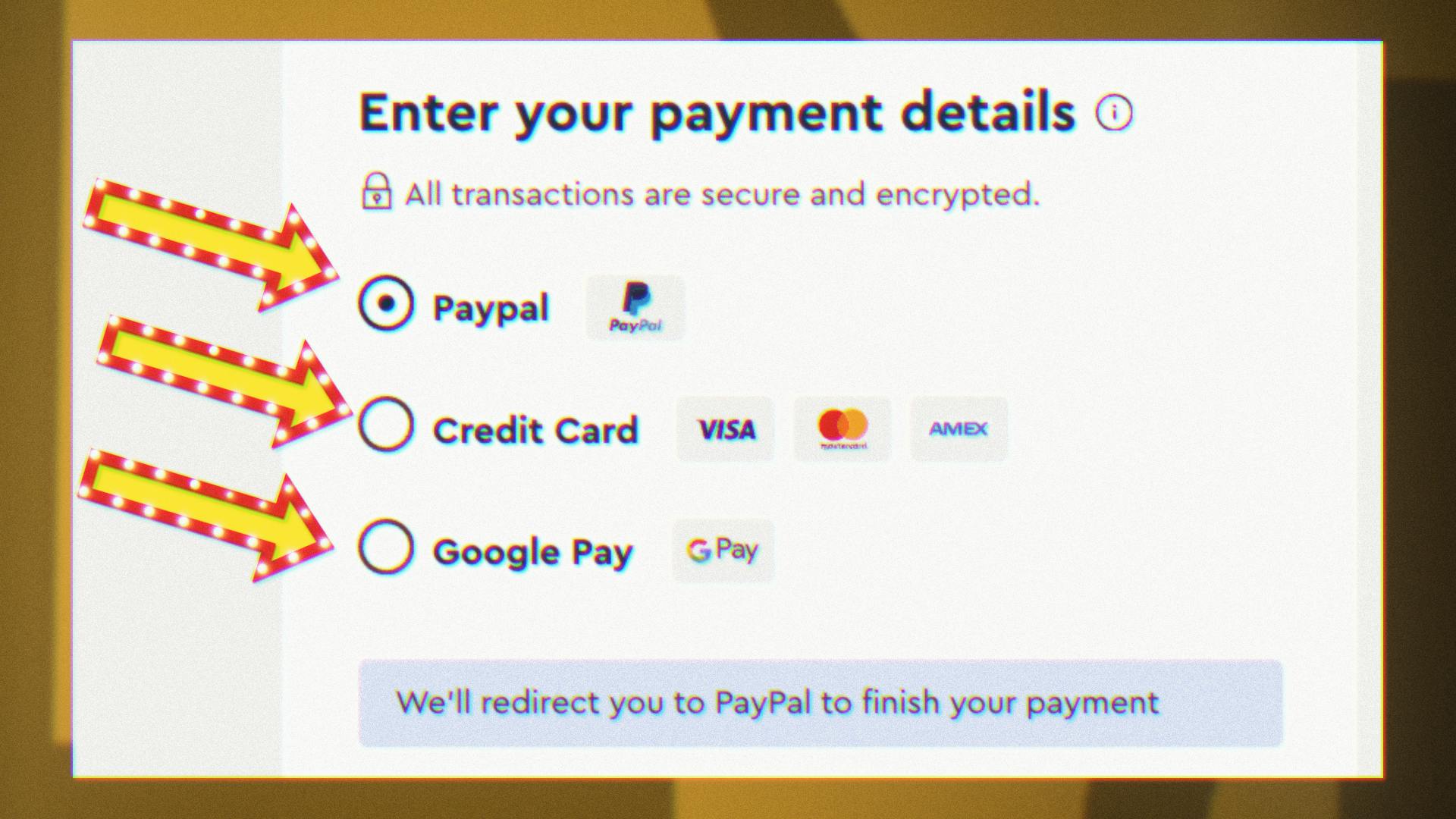
Download Friction
The final step in Blinkist’s funnel is transitioning users from the web to the app. Since many users initially engage on desktop, Blinkist provides a QR code that directs them to the app for a seamless transition.
- QR Codes for Convenience: While not essential for mobile-first users, QR codes are a useful bridge for those starting on desktop.
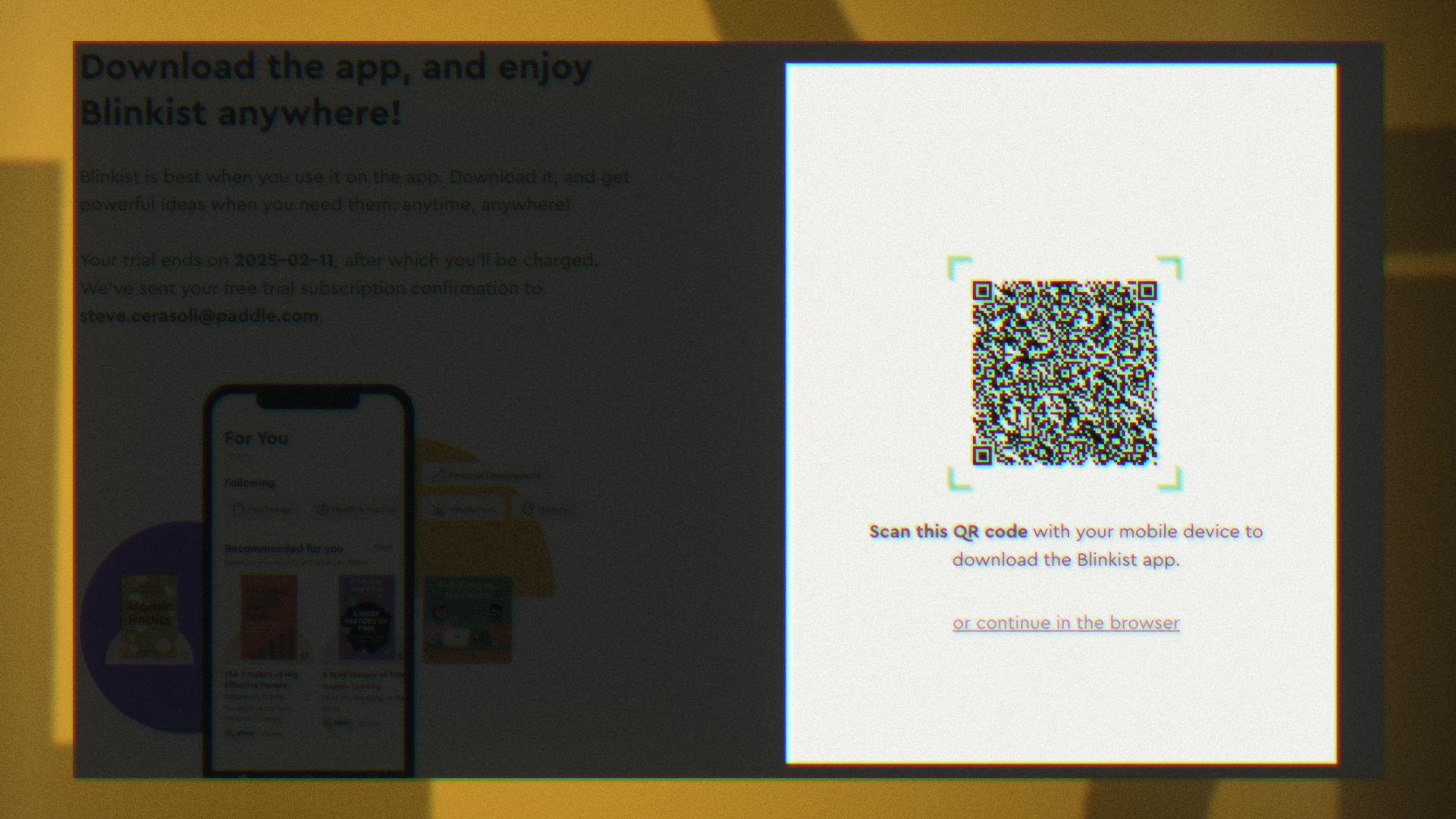
- Follow-Up Emails: Blinkist smartly pairs QR codes with email prompts, ensuring users have multiple ways to continue their journey.

While this step is executed well, brands should continuously refine their Web2App transition by testing different follow-up mechanisms to reduce drop-offs.
Takeaways
Blinkist’s Web2App funnel is packed with smart strategies that drive conversions, but there’s always room for improvement.
Two Key Strengths
- Engaging and interactive onboarding: Blinkist masterfully integrates interstitial messages that reinforce user choices and prevent fatigue.
- Strategic paywall design: By anchoring pricing and using urgency tactics, Blinkist simplifies decision-making and encourages commitment.
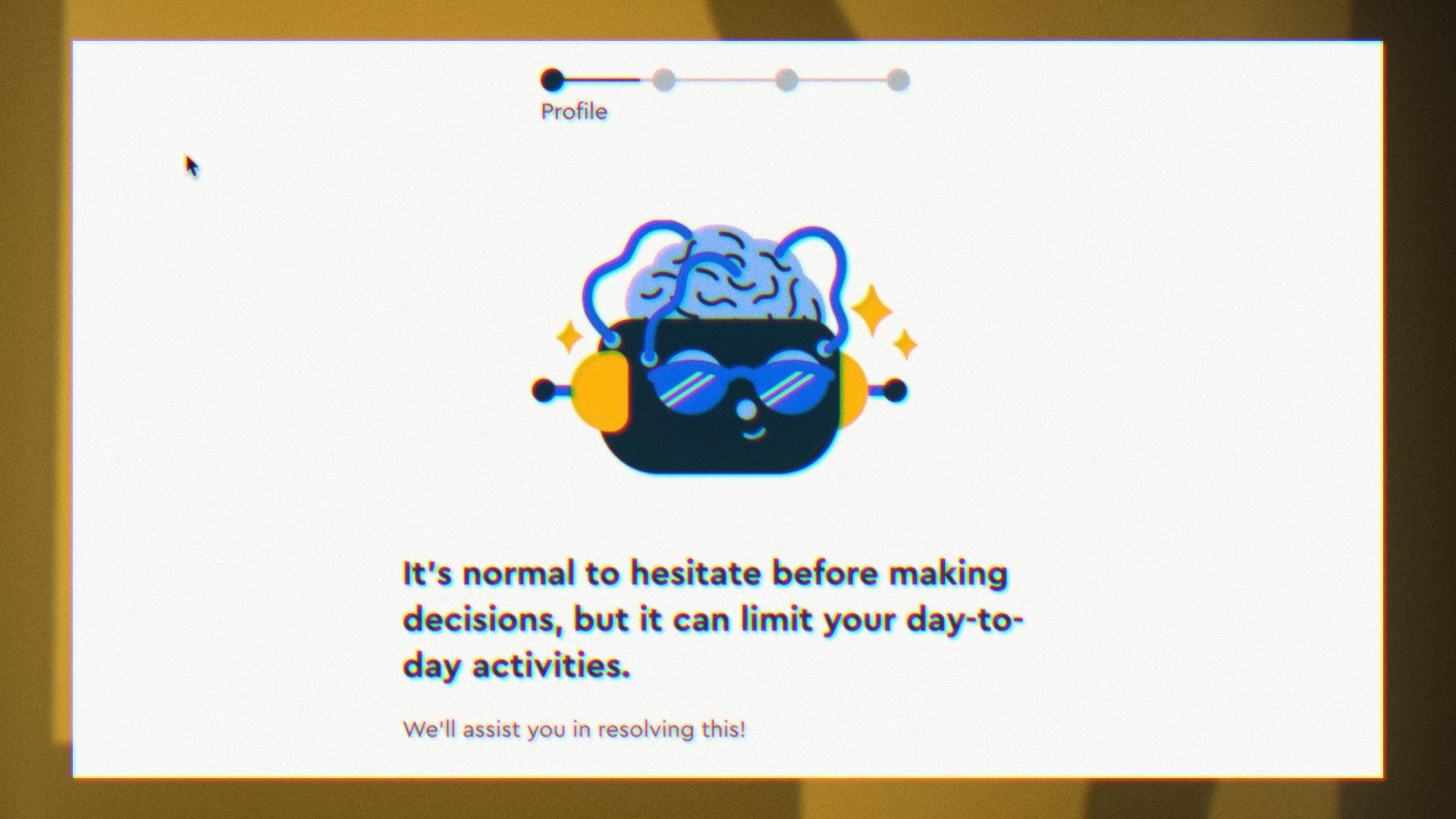
Areas to Experiment:
- Refining interstitial messaging to feel more natural and less promotional.
- Experimenting with AI-driven personalization to tailor onboarding experiences even further.
- Exploring alternative paywall formats that introduce flexibility without reducing conversions.

As always, Fix That Funnel will be back next week, where we’ll break down Duolingo’s funnel strategy. Stay tuned!
Full Interview With Nathan Hudson
00:00:03:07 - 00:00:30:18
Steve
Oh, hi. I didn't see you there. When I'm not breaking down web funnels with industry experts, I'm usually here in my beautiful study. Brett, can we get some more logs on the fire, please? Another log on the fire. Sorry about that. I'm your host, Steve. And today we are breaking down the web funnel of Blinkist. Now, I've been trying to get back into reading lately, but it's been so hard to find the time between mingling with industry experts and giving you the hottest takes on app growth.
00:00:30:23 - 00:00:51:12
Steve
That's where Blinkist saves me time by summarizing all of my favorites into great, digestible takeaways, so I don't have to read the full thing. Now the product's great, but how is their web funnel? Well, today we're getting expert insight to steer you in the right direction and show you what they're doing. Great and not so great. So are you ready to fix that channel?
00:00:51:14 - 00:01:11:02
Steve
We're going to fix that funnel tonight. We're gonna fix your funnel, right? We're gonna fix that funnel tonight. We're gonna make those prospects buy. Doesn't matter if you're big or small. We're gonna fix your onboarding. And meanwhile, we're gonna fix that funnel tonight. We're gonna fix.
00:01:11:02 - 00:01:18:14
Michael
That until to.
00:01:18:16 - 00:01:38:08
Steve
Well, Michael, I'd love to talk more, but I have a meeting with the bigwigs about our web two app strategy. Churn is on the Fritz. New payment methods pop up every day, and our customer base is global. But I didn't realize we'd have to deal with sales tax compliance. Sounds like a lot of stress these days. I'm stressing out more and more and more.
00:01:38:10 - 00:01:46:08
Steve
Wait, wait, did you say more? I'm sending you paddle right now. Their whole thing is giving the world more. Check your mailbox.
00:01:46:08 - 00:02:04:20
Voice Over
Tomorrow morning with paddle. We take care of the headaches around your web payments so you can focus on what really matters. As a merchant of record, we provide your all in one solution for web monetization to boost your growth and margin. Simply plug in, paddle and feel the stress melt away.
00:02:05:00 - 00:02:17:13
Steve
Hey, Michael, nice to chat with you again. Yeah, yeah, I have a lot to cover. Is it okay if we go over? I know you've been busy with the whole web app thing. Michael. Michael, we have plenty of time. Have that all taken care of now.
00:02:17:15 - 00:02:22:10
Voice Over
The world needs more. So why settle for less? Get started.
00:02:22:10 - 00:02:38:14
Steve
Now. Yeah. So, to help us dive into Blinkist Web two app strategy, today we are joined by the one and only the founder of skeptics, the app marketer of the year. The web app guru himself, Nathan Hudson. Nathan, thanks for being here now.
00:02:38:15 - 00:02:40:03
Nathan
Absolutely. Thanks for having me.
00:02:40:05 - 00:02:44:15
Steve
So, Nathan, tell us why you're the man for the job today. What got you into this crazy world of app growth?
00:02:44:17 - 00:03:02:12
Nathan
So I've been. I've been in marketing for a while, but it was my first role in mobile marketing. That kind of excited me and got me introduced to the world of growth skeptics. We work with a whole lot of different mobile apps, ranging from small startups to apps telling you about lots and lots of money. And one of the areas we look at a lot is whipped out.
00:03:02:14 - 00:03:12:09
Steve
Before we get into Blinkist onboarding, we're going to take a step back and look at their web app strategy as a whole.
00:03:12:11 - 00:03:23:11
Steve
So, Nathan, you can purchase Blinkist on the App Store or also on the web, whether that's mobile or desktop. It's kind of this hybrid approach that we're seeing a lot this season. What are the benefits of running a web two app strategy like this.
00:03:23:14 - 00:03:41:13
Nathan
At Blinkist size? The fact that they want to reach as many people as possible. And they're running a hold of different pay channels. They have referrals. They have a lot of organic search and organic traction and they want to make sure that wherever a prospect lands, there is an opportunity to start and finish the conversion journey. There are loads of other reasons.
00:03:41:15 - 00:03:55:20
Nathan
For example, audience expansion. When you scale your spend on just that alone, it gets to a point where you begin to struggle to scale any further. When you move some of that spend over to web, you can tap into new pockets of the audience and really expand in different ways.
00:03:55:22 - 00:04:03:20
Steve
Now, you also mentioned in one of your YouTube videos that web funnels don't have to be as complicated as what we're about to see. With Blinkist, your onboarding quiz can be a lot more simplified, right?
00:04:03:20 - 00:04:23:04
Nathan
That's right. I mean, I think nowadays when we say web app or web monetization, web phones, anything to do with web and app, we think, oh yeah, that quiz. But there are other ways you can run what that right. If we just have a landing page at checkout page and we run out ticktock ads to that page, in a sense we have a web funnel.
00:04:23:06 - 00:04:35:02
Steve
So your onboarding can be as simple or as complex as you need based on the use case. But Blinkist is very detailed. So let's dive in and check out their onboarding strategy.
00:04:35:04 - 00:04:39:15
Steve
So we're now here on Blinkist homepage. What are we seeing with this big H1? Right off the bat.
00:04:39:21 - 00:04:53:05
Nathan
This title grew to be the most interesting person in the room. Calls out the value proposition, right? It's the core job to be done that they're trying to address, and they try to reach out for their audience and reel them in. So having this provides context and kind of hooks you.
00:04:53:05 - 00:04:57:06
Steve
It if we keep going here, we see a lot of social proof. What's the importance of that.
00:04:57:07 - 00:05:08:14
Nathan
Typically we see the biggest drop off on page one. So the pace that we just saw and now we're expecting to see a huge drop. So if we can get people past these points then probably we're going to get them close to the end of the final.
00:05:08:19 - 00:05:16:10
Steve
So as we keep going through the web funnel, we're starting off simple and we're getting a lot more complex. Is this typical or is this just a Blinkist thing?
00:05:16:10 - 00:05:33:14
Nathan
I've seen both work. Right. So sometimes we start deeper and then end with some some shallow question. Really you want to start with hooking them in. Like why? What are you hoping for. Which is what we see right here. Right. Which areas do you want to grow. So I'm not sure as to why exactly they have that age question first.
00:05:33:19 - 00:05:43:00
Nathan
And often times I've actually seen that having age first can hinder conversions, but they've obviously got the data in their reasoning. So there's going to be something else at play.
00:05:43:04 - 00:05:51:01
Steve
It's interesting because as we go deeper, we see this kind of push and pull where you provide an answer and then they give you something in return. What purpose does something like this serve?
00:05:51:03 - 00:06:14:15
Nathan
I think the push pull analogy is a nice one. I like to think of it as starting from basics. The reason we have the onboarding journey is to one. Collect data to understand our customer and convince them that our products are the best. But from the user's perspective, neither of those things are particularly relevant. So I like to call them interstitial pages, which should basically those pages in between questions where you break up the monotony of asking questions.
00:06:14:15 - 00:06:34:12
Nathan
And you can see this if you click on one of these and then, you know, go for and then go back and then click on the next one. So depending on what answer you're you're clicking you get a different interstitial. And the reason is because they're trying to, you know, resonate with you and build empathy. I think that's one of the things that is really important about the onboarding journey is the goal is not to ask questions.
00:06:34:14 - 00:06:36:02
Nathan
It's to connect with the user.
00:06:36:05 - 00:06:45:22
Steve
And as we wrap up our journey through Blinkist onboarding, we end with this screen here with this loading bar. And they continue to ask us more questions. Are you a fan of this loading bar? Is this loading bar effective?
00:06:46:00 - 00:07:04:08
Nathan
The loader itself is kind of this. We're personalizing your experience loader, which does a great job of convincing users that they're going to get something right. So making us wait. So it could be that these questions that are coming up is adding up to keep the users engaged and keep them on this part of the process and not dropping off.
00:07:04:10 - 00:07:10:03
Nathan
But equally, it's almost as if they're taking these additional inputs into the personalization.
00:07:10:05 - 00:07:18:18
Steve
And now that we've wrapped up our onboarding journey, we're going to pull out our credit cards and head over to the paywall.
00:07:18:20 - 00:07:25:11
Steve
So Nathan, we've answered all these great questions. We've bought into Blinkist and now we're on the pricing page. What are you seeing on the pricing page here?
00:07:25:13 - 00:07:47:13
Nathan
I think one thing to keep in mind, as we're looking at the desktop version, right. So mobile a little different in terms of formatting here for example that that the countdown's a little more obvious on mobile than it is here. What's interesting to me particularly is how they anchor things and what they're doing here. Because typically when you think about, you know, checkout page, you think about offering different plans.
00:07:47:17 - 00:08:10:21
Nathan
But Blinkist aren't doing that here. They're essentially only offering you a 12 month plan. Like whatever you pick, it's going to be 12 months. There is always this this kind of push to get more annual subscribers because it becomes easier to optimize paid traffic for. But when you anchor an expensive offering with a less expensive offering that has a few different features, it's almost a win win for them.
00:08:10:23 - 00:08:26:18
Steve
So we agree the pricing looks good. We decide to choose our plan and we get to our actual paywall here, where we put our credit card information in. We ran this through a VPN, and we found out that they're actually running localization so that means that if we're in Europe, they're charging in euros. If we're in America, they're charging in US dollars.
00:08:26:19 - 00:08:37:06
Steve
Our data even show that most people are able to buy Blinkist in their native currency. Now, petal is a merchant of record and we can handle this part for you. So we love this section. So how important is localized pricing?
00:08:37:08 - 00:08:59:01
Nathan
It's super important. Price is the biggest indicator or the biggest thing that's going to, you know, determine a decision and whether or not they understand what that price means is largely dependent on what currency you display the price in. It's not necessarily the easiest. And if you're using images and kind of static banners, it becomes even more difficult because you have to then change every single banner.
00:08:59:02 - 00:09:03:13
Nathan
So that's one thing that they've got. They've got really well here people should definitely consider.
00:09:03:15 - 00:09:09:18
Steve
And our last bit before we wrap up the paywall payment methods is blink is doing enough here offering a diverse set of payment methods.
00:09:09:19 - 00:09:28:14
Nathan
I think it comes back to the point that we kick this whole thing off with, which was essentially making your product available to as many people as possible. Some people may not be comfortable getting that kind of details. Some people may not use PayPal. Some people may just want a quick option Google Pay Apple Pay, which is important to to include that.
00:09:28:19 - 00:09:33:03
Nathan
Don't just assume that every country in the world wants PayPal, credit card and Google Pay.
00:09:33:09 - 00:09:48:21
Steve
Now let's see how much friction there is between going from web over to the app. Now, Nathan, we see that they have this QR code here. How important is this last step from getting the customer on a desktop or a mobile browser? Over to the app?
00:09:48:23 - 00:10:07:21
Nathan
Based on what I've said already about making it easy for people. The assumption will be I'm going to say it's super important. Actually, though, I would say arguably not so important in this case. And the reason I say that is because again, most people will be on mobile app. However, it does make sense to have a QR code for those users who are on desktop.
00:10:08:02 - 00:10:15:12
Nathan
You can still email and I think that is something that I think it's do and should always be done, regardless of whether or not there is a QR code.
00:10:15:14 - 00:10:22:20
Steve
So we've wrapped up our entire journey here, and now it's time for some big takeaways. So Nathan, what are two things that they're doing really, really well here?
00:10:22:23 - 00:10:43:22
Nathan
So the number one thing I'd say is breaking up the monotony of asking questions. I think we saw that throughout the journey that there was some instances where not only do I select an answer, I see something on screen. When I click continue, I then see an interstitial that has information. I think that's super, super great. The other thing I'd say they do quite well is asking the engaging questions, not just surface level questions.
00:10:43:22 - 00:10:52:17
Nathan
It kind of ties to the point of, should you be building out this type of quiz funnel? If you are like a weather app, asking those questions is going to make no sense.
00:10:52:22 - 00:11:01:21
Steve
Although they're doing some things really, really well, there's always some room for improvement. So what are some things that they could experiment with or improve in 2025?
00:11:01:23 - 00:11:24:15
Nathan
The content of the interstitial screens themselves. So when you click on an answer and you have a message that comes up, sometimes I might fill this with headway as well. And it just feels a little forced. I was speaking to someone the other week, and their onboarding journey is very not a yes. It's all about challenging you, and I think it would be interesting to experiment with challenging my thinking and thought process to get.
00:11:24:19 - 00:11:36:16
Nathan
Maybe they've already done this and it didn't work for them. I think Blinkist is probably looking into. Or it could be looking into like generative AI onboarding journeys. And I think that would be the super cool and to make them a lot more dynamic.
00:11:36:17 - 00:11:48:23
Steve
Well, Nathan, thank you so much for being here. Make sure to check out for skeptics. Make sure you check out Nathan on Social. Make sure you check out all things Nathan Hudson and make sure you check out more. Fix that funnel we have Nathan on again later this season.
00:11:49:01 - 00:11:51:00
Nathan
Now. Absolutely. Thanks for having me.
00:11:51:02 - 00:12:07:17
Steve
I think it's about time I check up on my study and catch up on a little reading. Well, thanks again to Nathan Hudson for helping us out. Thanks to Blinkist for having such an awesome company. And thanks to my producer Brett for keeping me warm today. Thank you at home for watching! Fix that fun! Make sure to check us out next week where we cover Duolingo.
00:12:07:19 - 00:12:10:15
Steve
Now, if you'll excuse me, I'm going to read myself to sleep.

NPS Revenue Correlation: Impact of NPS on Revenue Expansion
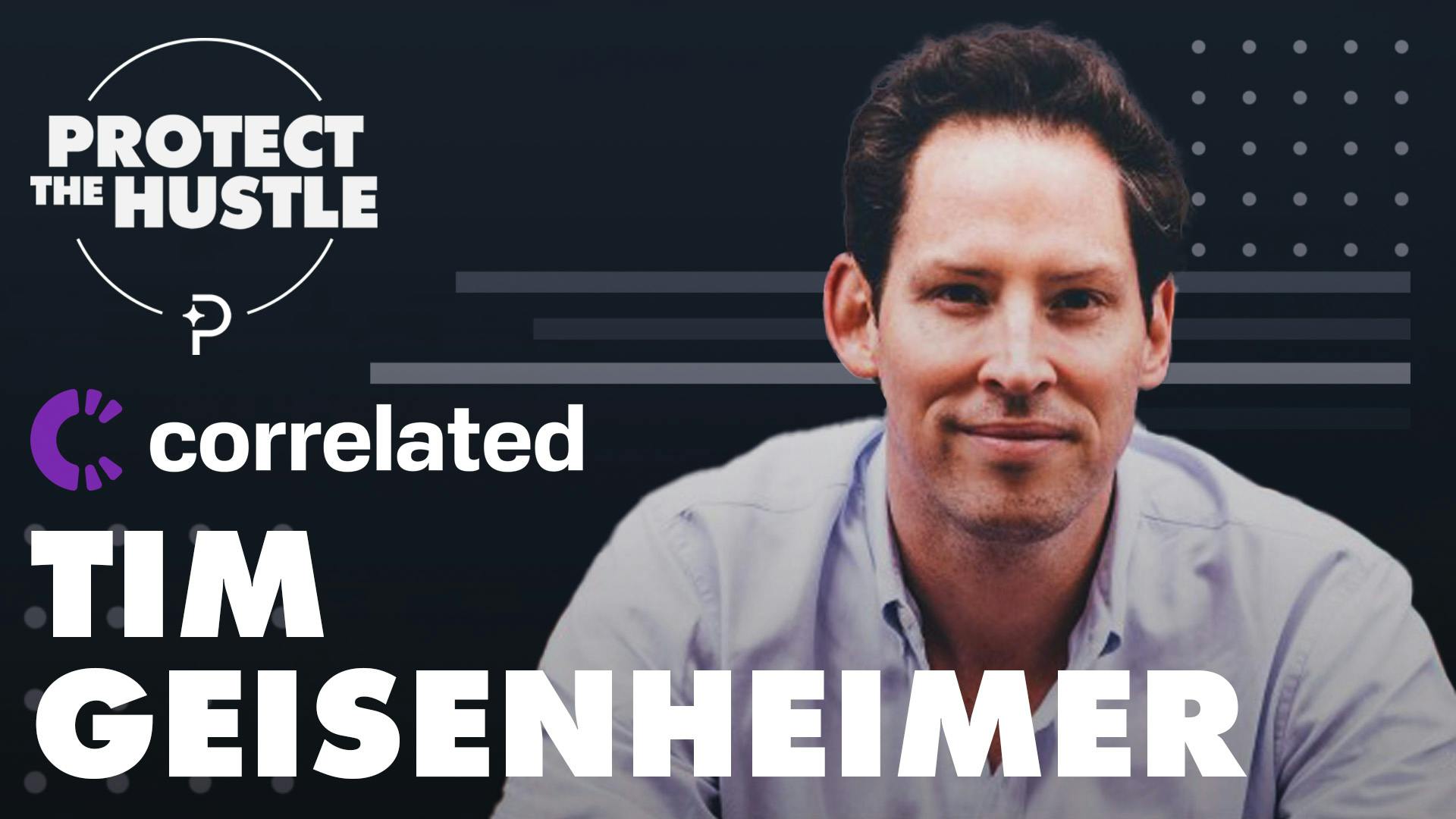
How a PLG team can add a sales function with Correlated's Tim Geisenheimer
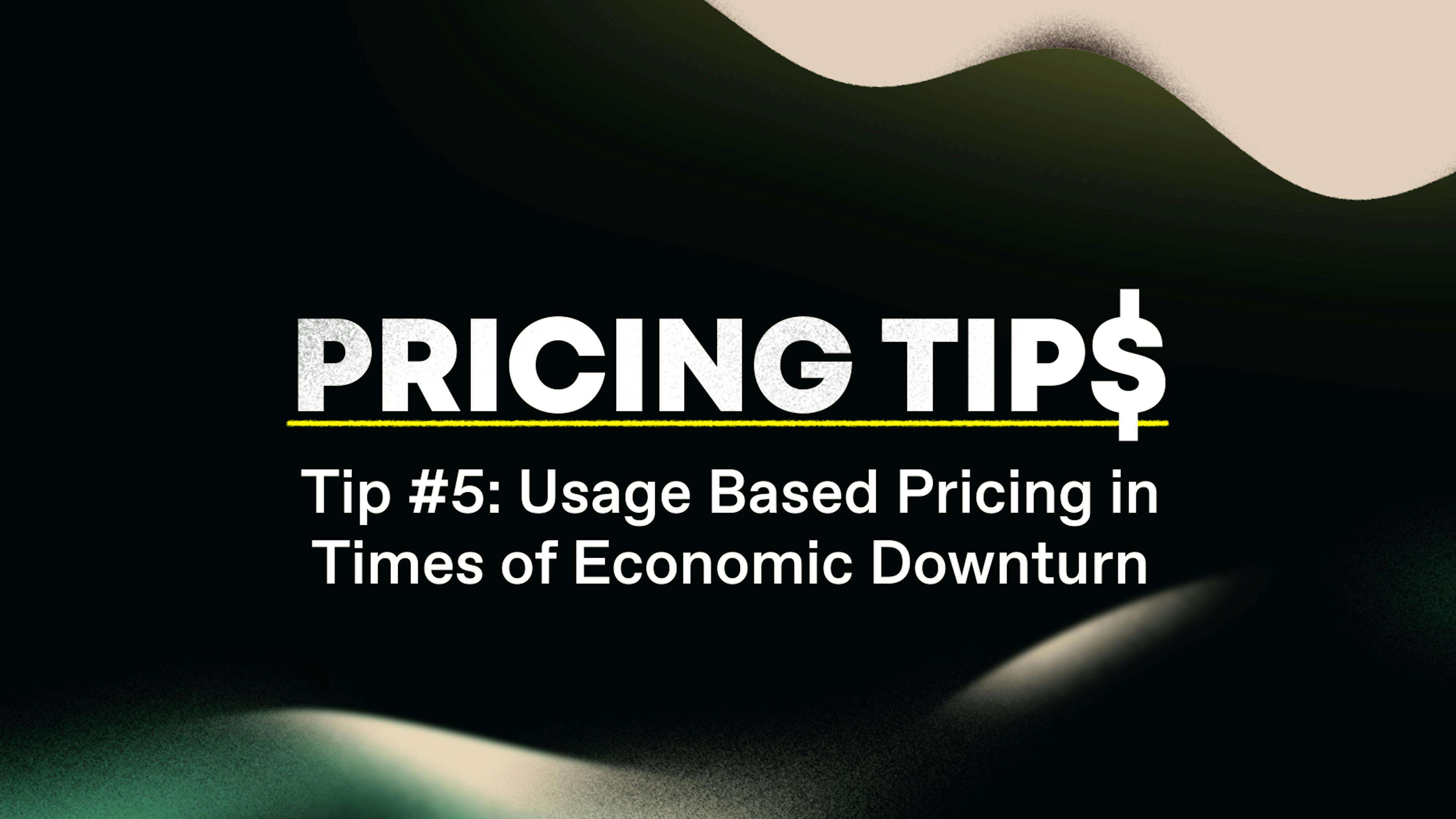
Tip 5: Usage Based Pricing During Times of Economic Downturn

Winning Sales Pitches: April Dunford Unleashes the Power of Positioning
